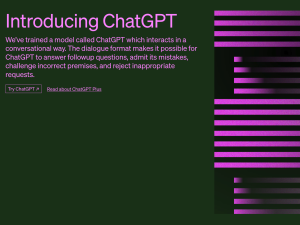 Planning a travel destination involves much more than simply choosing a location and booking a flight. Today, travelers are looking for unique experiences that will make their trips memorable. Creating anticipation and providing memorable experiences are crucial for a travel destination to attract and retain clients. Here are a few reasons why:
Planning a travel destination involves much more than simply choosing a location and booking a flight. Today, travelers are looking for unique experiences that will make their trips memorable. Creating anticipation and providing memorable experiences are crucial for a travel destination to attract and retain clients. Here are a few reasons why:
- Positive word of mouth: If clients have a great experience at a travel destination, they are likely to share it with their friends and family, either through word of mouth or social media. This positive feedback can encourage more people to visit the destination, leading to increased tourism and revenue.
- Repeat business: If clients have a memorable experience at a travel destination, they are more likely to return in the future or recommend the destination to others. Repeat business is a valuable source of revenue for any business, including travel destinations.
- Brand loyalty: When a travel destination consistently delivers memorable experiences, it can build brand loyalty among clients. Clients who feel a strong connection to a particular destination are more likely to return there and recommend it to others, even in the face of competition from other destinations.
- Differentiation: With so many travel destinations available, it’s important for destinations to differentiate themselves from others in order to stand out. Providing unique and memorable experiences can help a destination distinguish itself from others and attract more clients.
- Direct Bookings: When a destination experiences are memorable, people are more likely to book directly with the destination. Which much of travel now littered with middlemen taking commissions on leads, savings of 10% to 30% per booking can be had from direct bookings.
In short, creating anticipation and providing memorable experiences are essential for travel destinations to attract and retain clients, build brand loyalty, and differentiate themselves from competitors, and save costs. To ensure that you’re providing the experiences people want, it’s essential to conduct research and gather data about what people are looking for in a vacation. Here are some tools and methods you can use to create and market the experiences people want when planning travel and tourism destinations.
Google’s Keyword Planner
When people begin researching a travel destination, they most often turn to Google to search. By identifying the language and phrases people use to describe the experiences they’re seeking, tourism businesses can tailor their marketing efforts and product offerings to better meet the needs and desires of their target audience.
For example, if keyword research reveals that many people are searching for “unique outdoor adventures” or “off-the-beaten-path destinations,” tourism businesses can focus on offering experiences that fit those criteria. This may include guided hikes to lesser-known locations, eco-tourism experiences, or unique outdoor activities like zip lining or kayaking.
 By using the right keywords and phrases in their marketing materials, tourism businesses can also improve their search engine rankings, making it easier for potential customers to find them online. This can lead to increased visibility, more website traffic, and ultimately, more bookings and revenue.
By using the right keywords and phrases in their marketing materials, tourism businesses can also improve their search engine rankings, making it easier for potential customers to find them online. This can lead to increased visibility, more website traffic, and ultimately, more bookings and revenue.
One of the most powerful tools for conducting keyword research is Google’s Keyword Planner. By entering relevant keywords and phrases, you can gain insights into the search volume, competition, and related terms. When conducting research for travel-related experiences, it’s important to start with a list of destinations you’re interested in researching. For example, if you’re researching experiences in Hawaii, you might include keywords like “Hawaii vacation,” “Hawaii travel,” “things to do in Hawaii,” and “best Hawaii attractions.” From there, you can enter these keywords into Google’s Keyword Planner tool and analyze the results.
In addition to Keyword Planner, you can also use other tools like Google Trends to see which keywords are rising in popularity. This will help you stay ahead of the curve and provide travelers with the latest and most popular experiences. For example, if you notice that searches for “Hawaii hiking” are increasing, this might indicate that more people are interested in hiking experiences in Hawaii.
By combining these Google Tools, you can gain valuable insights into what experiences people are wishing to experience while planning a vacation. This can help you create more targeted and effective travel content, as well as guide your overall travel marketing strategy.
ChatGPT
 ChatGPT is a computer program designed to understand and respond to human language in a conversational manner. It is a type of artificial intelligence (AI) called a language model, which has been trained on vast amounts of data to recognize patterns and generate human-like responses. Essentially, when you ask ChatGPT a question or give it a prompt, it analyzes the input and uses its understanding of language to generate a relevant response.
ChatGPT is a computer program designed to understand and respond to human language in a conversational manner. It is a type of artificial intelligence (AI) called a language model, which has been trained on vast amounts of data to recognize patterns and generate human-like responses. Essentially, when you ask ChatGPT a question or give it a prompt, it analyzes the input and uses its understanding of language to generate a relevant response.
As an AI language model, ChatGPT can be a useful tool for discovering experiences that people are wishing to have while planning a vacation. Here are some ways in which ChatGPT can be helpful:
- Answering specific questions:ChatGPT can answer specific questions related to travel and vacations. For example, if you want to know what experiences people are looking for in a specific destination, you can ask ChatGPT and it will provide relevant information based on its vast knowledge base.
- Generating travel-related content ideas:ChatGPT can help generate ideas for travel-related content, such as blog posts or social media posts, that will resonate with potential travelers. For example, if you’re a travel blogger and want to write an article about unique experiences in a particular destination, ChatGPT can provide ideas based on its vast knowledge base and understanding of natural language.
- Providing personalized recommendations:ChatGPT can provide personalized recommendations based on user preferences and interests. For example, if someone is looking for adventure activities in a particular destination, ChatGPT can suggest activities like hiking, zip-lining, or white water rafting based on their interests.
- Analyzing social media trends:ChatGPT can analyze social media trends related to travel and vacations to identify popular experiences and destinations. This can help travel companies and destinations understand what people are interested in and tailor their marketing efforts accordingly.
In general, ChatGPT can be a valuable resource for individuals and businesses in the travel industry. With its vast knowledge base and understanding of natural language, ChatGPT has the potential to revolutionize the way we plan and experience travel.
AI-Powered Content Tools
 AI-powered content tools are software programs that use artificial intelligence and machine learning algorithms to assist content creators in generating high-quality and engaging content. These tools are designed to automate and streamline various aspects of the content creation process, such as research, writing, editing, and optimization.
AI-powered content tools are software programs that use artificial intelligence and machine learning algorithms to assist content creators in generating high-quality and engaging content. These tools are designed to automate and streamline various aspects of the content creation process, such as research, writing, editing, and optimization.
Some examples of AI-powered content tools include:
- Content creation platformsthat can generate content plans, articles, blog posts, and other types of content based on a given topic or keyword.
- Natural language processing (NLP) tools that can analyze and understand the tone, sentiment, and readability of written content.
- Content optimization toolsthat can suggest improvements to headlines, meta descriptions, and other on-page elements to improve SEO and increase visibility.
- Content curation toolsthat can help identify and gather relevant content from across the web.
- Grammar and style checkers that can automatically correct grammar, spelling, and punctuation errors.
AI-powered content tools can help content creators save time, improve quality, and increase the effectiveness of their content marketing efforts. However, it’s important to note that while these tools can be powerful, they should be used in conjunction with human oversight and judgment to ensure that the content is accurate, relevant, and aligned with the brand’s messaging and values.
Leading AI-powered content tools like SurferSEO and DemandJump can be incredibly useful for discovering experiences that people are wishing to have while planning a vacation. Here’s how:
- Keyword Research: Both SurferSEO and DemandJump can be used for keyword research to identify the search terms that people are using when they look for vacation experiences. By analyzing search volumes and related keywords, you can gain insights into what experiences people are looking for when they plan a vacation.
- Content Gap Analysis:These tools can also perform content gap analysis, which helps identify content that is missing from your website or blog. By analyzing the content of your competitors and identifying areas where their content is stronger than yours, you can create content that better serves the needs of potential travelers.
- Topic Suggestions: SurferSEO and DemandJump can also provide topic suggestions based on popular search terms and trending topics. This can help you create content that is more relevant to the interests and needs of potential travelers.
- Competitive Analysis:Both tools can be used to perform competitive analysis to identify what your competitors are doing in terms of content and marketing strategies. By analyzing their content, you can identify trends and gaps in the market that you can capitalize on.
Overall, AI-powered content tools can be incredibly useful for discovering experiences that people are wishing to have while planning a vacation. By using these tools, you can gain valuable insights into the needs and interests of potential travelers, and create content that better serves their needs.
Google Search Console
 Google Search Console (formerly known as Google Webmaster Tools) is a free tool provided by Google that helps website owners monitor and maintain their website’s presence in Google search results. It provides valuable insights into how Google crawls and indexes a website, and highlights any issues that may be impacting its visibility in search results.
Google Search Console (formerly known as Google Webmaster Tools) is a free tool provided by Google that helps website owners monitor and maintain their website’s presence in Google search results. It provides valuable insights into how Google crawls and indexes a website, and highlights any issues that may be impacting its visibility in search results.
Overall, Google Search Console is an essential tool for website owners looking to monitor and improve their website’s performance in Google search results. It provides valuable insights and actionable recommendations for optimizing a website’s visibility and ensuring it remains accessible to search engine crawlers. Google’s Search Console can be an extremely useful tool for discovering experiences that people are wishing to have while planning a vacation. Here’s how:
- Search Analytics: This shows the search terms that people are using to find your website. By analyzing this data, you can gain insights into the needs and interests of potential travelers and create content that better serves their needs.
- Performance Analysis: This shows how your content is performing in search results. By analyzing this data, you can identify what content is performing well and what content needs improvement, allowing you to refine your content strategy and create more effective content that resonates with potential travelers.
- Site Search:This shows what visitors are searching for on your website. By analyzing this data, you can identify what experiences and information visitors are looking for, allowing you to create content that better serves their needs.
- Link Analysis: This shows the websites that are linking to your content. By analyzing this data, you can identify what content is resonating with your target audience and what websites are driving the most traffic to your website, allowing you to refine your content strategy and create more effective content that resonates with potential travelers.
Basically, Google’s Search Console provides valuable data and insights to help travel websites create effective content that serves the needs and interests of potential travelers. By analyzing this tool, website owners can refine their content strategy and create more engaging and informative content. This tool can be a powerful resource for travel businesses looking to increase their online visibility, improve their website’s performance, and ultimately attract more visitors.
Google Business Profile
 Google Business Profile (formerly Google My Business) is a free tool provided by Google that enables businesses to create an online profile with information about their business, such as their name, address, phone number, hours of operation, and website. This information appears in Google Maps and in the Local Pack section of Google Search results, which can increase the visibility of a business and make it easier for potential customers to find them.
Google Business Profile (formerly Google My Business) is a free tool provided by Google that enables businesses to create an online profile with information about their business, such as their name, address, phone number, hours of operation, and website. This information appears in Google Maps and in the Local Pack section of Google Search results, which can increase the visibility of a business and make it easier for potential customers to find them.
Businesses can also add photos, videos, and customer reviews to their Google Business Profile, providing additional information and social proof to help customers make informed decisions.
Google Business Profile also provides insights into how customers interact with a business’s profile, including data on the number of views, clicks, and direction requests generated by the profile.
To create a Google Business Profile, a business owner must verify their ownership of the business, either by receiving a postcard with a verification code in the mail, via phone call or email, or by instant verification if they have already verified their business website with Google Search Console.
Overall, Google Business Profile is an essential tool for businesses looking to improve their online visibility and reach more potential customers through Google Maps and Google Search. Data from your Google Business Profile can provide valuable insights into which experiences people are wanting to have while traveling. Here are some ways in which this data can be used:
- Popular search terms:The search terms used by people to find your business can give insights into what experiences or activities they are interested in. For example, if you operate a restaurant in a tourist destination, you may notice that people are frequently searching for terms related to local cuisine or outdoor dining experiences.
- Reviews and ratings: Reviews and ratings left by customers on your Google Business Profile can provide valuable feedback on their experiences with your business. Analyzing reviews can help you identify which aspects of your business are most highly valued by customers, and which experiences or activities they enjoy most.
- Photo and video engagement:Photos and videos on your Google Business Profile can give insights into what experiences or activities are most appealing to potential customers. Analyzing the engagement rates of different photos and videos can help you identify which experiences or activities are most likely to attract potential customers.
- Google Maps data:Data on how people are interacting with your business on Google Maps, such as the number of times your business is viewed on the map or how often people ask for directions to your location, can give insights into how popular your business is as a destination for travelers.
Google Business Profile can provide valuable insights into which experiences and activities potential customers are interested in. It is important for businesses to regularly monitor and update their Google Business Profile to ensure that they are providing accurate and relevant information to potential customers.
Social Media
Social media refers to online platforms and tools that allow users to create, share, and exchange content with others. Social media platforms can include websites and apps that are designed to facilitate social networking, content creation, and online communication.
refers to online platforms and tools that allow users to create, share, and exchange content with others. Social media platforms can include websites and apps that are designed to facilitate social networking, content creation, and online communication.
When it comes to travel planning, there are several social media platforms that can be particularly useful for travelers:
- Facebook: With over 2.7 billion active users, Facebook is one of the largest social media platforms in the world. Facebook allows users to join travel groups and connect with other travelers, share travel photos and stories, and discover new destinations and travel tips.
- Instagram: Instagram is a photo and video-sharing platform that is popular among travelers for its visually stunning content. Travelers can use Instagram to share travel photos and videos, follow travel bloggers and influencers, and discover new destinations and experiences.
- Pinterest: Pinterest is a visual discovery platform that allows users to save and organize images and videos into collections, or “boards”. Travelers can use Pinterest to discover travel inspiration and tips, save travel itineraries and ideas, and plan their trips visually.
- YouTube: YouTube is a video-sharing platform that is popular among travelers for its travel vlogs, destination guides, and travel tips. Travelers can use YouTube to discover new destinations, learn about travel experiences, and get advice from travel experts.
- Facebook: With over 2.7 billion active users, Facebook is one of the largest social media platforms in the world. Facebook allows users to join travel groups and connect with other travelers, share travel photos and stories, and discover new destinations and travel tips.
Social media can be a powerful tool for identifying the experiences people want to have while planning their travel.Here are some ways in which social media can be used to gather insights into traveler preferences:
- Hashtags: Travelers often use hashtags to share their experiences and connect with other travelers on social media. By monitoring popular travel hashtags related to your destination or industry, you can gain insights into the types of experiences and activities that are most popular among travelers.
- Social listening: Involves monitoring social media channels for mentions of your brand or industry. By tracking conversations related to travel and tourism, you can gain insights into the needs and preferences of potential travelers, and use this information to tailor your offerings and marketing efforts.
- Influencer marketing:Influencers can be a valuable source of insights into traveler preferences, as they often have large followings and share their travel experiences with their audience. By partnering with influencers in your industry or destination, you can gain insights into the types of experiences and activities that are most popular among their followers.
- User-generated content: Such as photos and videos shared by travelers on social media, can provide valuable insights into the types of experiences and activities that are most popular among travelers. By monitoring user-generated content related to your destination or industry, you can gain insights into the needs and preferences of potential travelers, and use this information to tailor your offerings and marketing efforts.
In general, social media can be a powerful tool for gathering insights into traveler preferences. By using this information, travel businesses can tailor their offerings and marketing efforts to better meet the needs and preferences of potential travelers, ultimately leading to more successful and satisfying travel experiences for both the business and the traveler. It is important for travel businesses to stay up-to-date with the latest social media trends and tools to make the most of this valuable source of information.
Memorable Tourism Experiences Scale

The MTES is designed to assess the extent to which a tourism experience is memorable, meaningful, and emotionally satisfying. The scale consists of several items, which are often divided into four sub-scales: sensory, cognitive, social, and behavioral.
The sensory sub-scale measures the degree to which the experience engages the five senses, such as taste, smell, touch, sight, and sound. The cognitive sub-scale measures the extent to which the experience challenges or expands one’s knowledge and understanding. The social sub-scale measures the degree to which the experience involves interaction with others. Finally, the behavioral sub-scale measures the extent to which the experience inspires action or behavior change.
Overall, the MTES provides a standardized and validated method for measuring the impact of tourism experiences on individuals and can be used by researchers and tourism businesses to better understand and tailor their offerings to meet the needs and desires of their target audience. Examples of uses include:
- Understanding Tourists’ Motivations: The MTES can help identify what motivates tourists to choose a specific destination and what they expect to experience during their trip. By understanding tourists’ motivations, you can create content and experiences that better serve their needs.
- Identifying Key Experiences:The MTES can help identify the key experiences that tourists are seeking when they visit a destination. By understanding what experiences are most important to tourists, you can create content and experiences that better meet their expectations.
- Evaluating Experiences:The MTES can be used to evaluate tourists’ experiences and identify areas for improvement. By analyzing tourists’ feedback and using the MTES to evaluate their experiences, you can refine your offerings and create more effective content and experiences that better serve their needs.
- Creating Memorable Experiences:The MTES can be used to create experiences that are more memorable and impactful. By focusing on the key experiences that tourists are seeking and using the MTES to evaluate and refine your offerings, you can create experiences that are more likely to create lasting memories for your visitors.
Overall, the Memorable Tourism Experiences Scale (MTES) can be a valuable tool for tourism professionals to understand tourists’ motivations, identify key experiences, evaluate experiences, and create more memorable experiences for visitors. By using this scale, tourism professionals can better meet tourists’ expectations, refine their offerings, and ultimately provide a more satisfying and memorable travel experience. The MTES can help tourism businesses differentiate themselves from competitors, attract more visitors, and ultimately contribute to the growth of the tourism industry.
Talk to People
 In addition to the tools and strategies mentioned earlier, understanding people (travelers, providers, and competitors) determine the experiences people are looking for while planning their travel. Approaches to do this include:
In addition to the tools and strategies mentioned earlier, understanding people (travelers, providers, and competitors) determine the experiences people are looking for while planning their travel. Approaches to do this include:
- Conduct surveys:Surveys are a great way to gather insights directly from potential travelers. You can use online survey tools to ask questions about the types of experiences and activities they are interested in, as well as their preferences for accommodations, transportation, and other aspects of their trip.
- Focus groups: Focus groups can be useful for exploring people’s attitudes and motivations when it comes to travel planning. You could gather a group of travelers and ask them about their experiences researching travel, what sources they use, and what factors influence their decision-making.
- Interviews:Conducting one-on-one interviews with travelers can provide more in-depth insights into their travel research habits. You could ask open-ended questions about how they plan their trips, what sources they use, and what factors influence their decision-making.
- Attend travel industry events: Attending travel industry events like trade shows, conferences, and exhibitions can provide valuable insights into the latest travel trends and preferences. These events offer opportunities to network with industry professionals, learn about new travel products and services, and gather insights from keynote speakers and panel discussions.
- Analyze competitors:Analyzing your competitors can provide valuable insights into the types of experiences and activities that are most popular among travelers. By reviewing your competitors’ websites, social media channels, and other marketing materials, you can gain insights into the types of travel products and services they offer, as well as their pricing strategies and customer reviews.
To summarize, understanding the experiences and activities that people are looking for while planning their travel is crucial for travel industry professionals to create effective marketing campaigns and offer the best products and services. By utilizing these tools and techniques, you can gain valuable insights into what experiences people are wishing to experience while planning a vacation. This can help you create more targeted and effective travel content, as well as guide your overall travel marketing strategy. Whether you’re a travel blogger, destination marketer, or tour operator, understanding the experiences people want is essential for success in the travel industry.
How to identify the emotions that create memorable experiences
 Memorable experiences are experiences that are particularly impactful, meaningful, or emotional, and that are likely to be remembered long after the experience has ended. These experiences can be positive or negative, and they can vary widely depending on the individual and the context in which they occur.
Memorable experiences are experiences that are particularly impactful, meaningful, or emotional, and that are likely to be remembered long after the experience has ended. These experiences can be positive or negative, and they can vary widely depending on the individual and the context in which they occur.
In the context of travel and tourism, memorable experiences often involve unique, authentic, and immersive experiences that allow travelers to connect with a destination in a meaningful way. This might include activities like hiking to a remote waterfall, participating in a cultural festival, trying new and exotic food, or simply having a conversation with a local resident.
Memorable experiences are often characterized by a high level of engagement, emotional resonance, and personal relevance. They can create lasting memories, increase personal satisfaction and fulfillment, and even inspire personal growth and transformation. In the tourism industry, creating memorable experiences is an important way to build customer loyalty, drive repeat business, and differentiate a destination or travel brand from competitors.
Identifying the emotions that might make an experience memorable during travel involves understanding the psychological factors that contribute to the formation of long-lasting memories. Here are some tips for identifying these emotions:
- Pay attention to the senses: Memorable experiences often involve a strong sensory component. By paying attention to the sights, sounds, smells, tastes, and textures associated with different experiences, you can identify the emotions that they might evoke. For example, the scent of pine trees in a forest might evoke a feeling of tranquility and relaxation, while the roar of a waterfall might evoke a sense of excitement and awe.
- Look for surprises:Unexpected events or discoveries can create a sense of surprise and delight, which can contribute to the formation of memorable experiences. Look for experiences that offer unique or unexpected elements, such as hidden trails or secret viewpoints, that might evoke feelings of surprise or wonder.
- Consider the social context:Social experiences, such as interacting with locals or bonding with fellow travelers, can create a sense of connection and belonging that contributes to the formation of memorable experiences. Look for experiences that offer opportunities for social interaction and connection, such as cultural festivals or group tours.
- Reflect on personal values:Memorable experiences often involve a connection with personal values and beliefs. Consider the values that are important to you, such as environmental sustainability or cultural preservation, and look for experiences that align with those values.
Overall, identifying the emotions that might make an experience memorable during travel involves paying attention to the sensory, social, and personal factors that contribute to the formation of long-lasting memories. By considering these factors, you can identify experiences that are likely to evoke strong emotions and create lasting memories for travelers.
Building Anticipation
 Anticipation is a key factor in making memorable tourism experiences. The anticipation of an upcoming trip can create a sense of excitement, anticipation, and positive anticipation, which can help to build anticipation and emotional attachment to a destination or experience. Anticipation can also help to build expectations and to create a sense of anticipation and excitement around the trip.
Anticipation is a key factor in making memorable tourism experiences. The anticipation of an upcoming trip can create a sense of excitement, anticipation, and positive anticipation, which can help to build anticipation and emotional attachment to a destination or experience. Anticipation can also help to build expectations and to create a sense of anticipation and excitement around the trip.
As travelers plan their trip, they may research the destination, read reviews, and explore different activities and experiences they can have while there. This anticipation and preparation can increase the sense of excitement and anticipation, and help to build positive associations with the destination and experience.
In addition, anticipation can also contribute to the overall satisfaction and enjoyment of the experience. Research has shown that people often enjoy the anticipation of an experience as much or even more than the experience itself. This is because anticipation allows people to imagine and anticipate the positive emotions and experiences they will have, which can create positive emotions and a sense of excitement.
Overall, anticipation is an important factor in creating memorable tourism experiences. By building anticipation, travel businesses can help to create a sense of excitement and anticipation around a trip, and to build positive associations with the destination and experience. This can ultimately lead to higher levels of satisfaction, enjoyment, and loyalty among travelers.
Content that builds anticipation
Content is a critical element in building anticipation for memorable tourism experiences. Before booking a trip, travelers often research destinations, activities, and accommodations to get an idea of what they can expect from their experience. By providing engaging, informative, and visually appealing content, travel businesses can create excitement and anticipation around the experience.
Here are some ways that content can help to build anticipation for memorable tourism experiences:
- Inspiring visual content: High-quality photos and videos can give travelers a sense of what they can expect from their experience. Visual content that showcases the destination’s natural beauty, cultural attractions, and unique experiences can help to build excitement and anticipation.
- Compelling storytelling: Storytelling is an effective way to create an emotional connection with travelers. By sharing stories about the destination, its people, and its history, travel businesses can help travelers to imagine themselves in the experience and to build anticipation.
- Informative and educational content: Providing useful information about the destination, including things to do, local customs, and travel tips, can help travelers to feel prepared and informed, which can increase their anticipation and excitement.
- User-generated content: Sharing content created by other travelers can help to build anticipation and excitement, as it provides a sense of authenticity and social proof. User-generated content can also help to create a sense of community around the destination or experience.
By creating engaging and informative content, travel businesses can help to build anticipation and excitement around memorable tourism experiences. This can ultimately lead to higher levels of satisfaction, enjoyment, and loyalty among travelers.
Emotional Trigger Words that help build Anticipation
 Emotional trigger words are powerful words that can elicit a specific emotional response in the reader. These words can be used to create an emotional connection with the reader and to build anticipation for a memorable tourism experience. To determine the words to use in content to convey the emotions that make a memorable tourism experience, it’s important to have a deep understanding of the experience itself and the emotions it evokes. Here are some tips to help:
Emotional trigger words are powerful words that can elicit a specific emotional response in the reader. These words can be used to create an emotional connection with the reader and to build anticipation for a memorable tourism experience. To determine the words to use in content to convey the emotions that make a memorable tourism experience, it’s important to have a deep understanding of the experience itself and the emotions it evokes. Here are some tips to help:
- Use sensory language:To convey the emotions associated with a memorable tourism experience, use descriptive language that appeals to the senses. For example, use words like “lush” or “vibrant” to describe a colorful marketplace or “invigorating” to describe a hike through a scenic landscape.
- Incorporate action words: Action words help to convey the energy and excitement associated with memorable experiences. Use words like “discover,” “explore,” and “immerse” to convey a sense of adventure and excitement.
- Connect to personal values:Memorable experiences often involve a connection with personal values and beliefs. Use language that connects the experience to personal values and beliefs, such as “sustainable,” “eco-friendly,” or “community-driven.”
- Consider the target audience:Different audiences may have different emotions associated with a particular experience. Consider the target audience when selecting the words to use in the content. For example, families may be more interested in experiences that are kid-friendly, while adventure travelers may be more interested in experiences that are adrenaline-fueled.
- Use emotional language: Use language that directly conveys the emotions associated with the experience. For example, use words like “awe-inspiring,” “life-changing,” or “unforgettable” to convey a sense of awe, transformation, or lasting impact.
To summarize, selecting the words to use in content to convey the emotions that make a memorable tourism experience involves understanding the experience and the emotions it evokes, and tailoring the language to resonate with the target audience. By using descriptive, action-oriented, and emotionally evocative language, you can create content that captures the essence of a memorable tourism experience and inspires travelers to take action.

